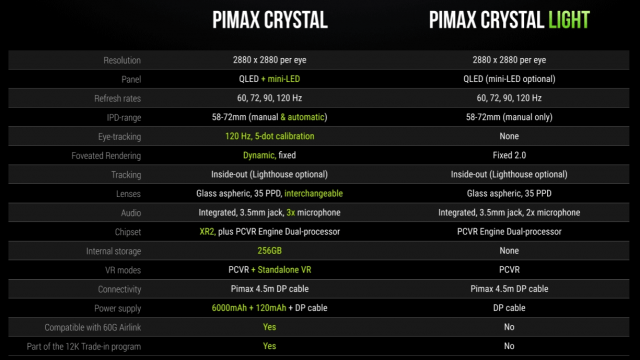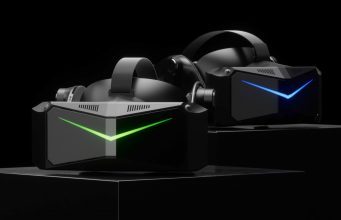
Pimax today announced two new Crystal series PC VR headsets, one of which is focused on affordability while the other pushes the envelope on resolution.
During a prerecorded presentation today, Pimax introduced the Crystal Light and Crystal Super PC VR headsets.
Pimax Crystal Light
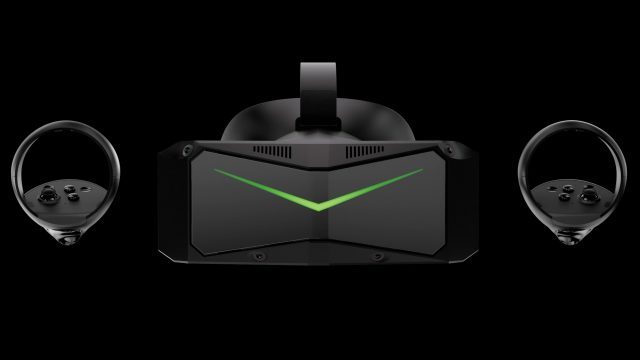
Crystal Light might sound like a diet drink, but it’s actually a more affordable version of the company’s flagship Crystal headset, which Pimax says has been “highly successful.” The company says Crystal Light is a “streamlined iteration” of the original Crystal headset, and cuts some major features to reduce the weight and price of the headset.
Most notably, Crystal Light ditches the original version’s on-board Snapdragon XR2 processor, battery, and storage, which allowed the headset to run in a standalone mode without a PC.
Crystal Light retains the same 8.3MP (2,880 × 2,880) per-eye resolution as the original headset, while dropping eye-tracking, automatic IPD adjustment, interchangeable lenses, and on-board hardware to enable compatibility with a 60GHz wireless module.
Doing so has allowed the company to drop weight by 30% and the price of the Crystal Light to $700 (compared to the original Crystal at $1,600).
While that’s a huge savings over the original, it’s the price of the headset with inside-out tracking and controllers. Those wanting the full SteamVR Tracking will need to add controllers and base stations which add another $580 or so, plus a SteamVR Tracking faceplate for the headset (currently of unknown price).
Like the original, Crystal Light has on-board audio and claimed 125° degree horizontal field-of-view.
Pimax also says the Crystal Light can be optionally equipped with mini-LEDs in its display for greater contrast via local dimming, which will raise the headset’s price to $900.
Crystal Light is available for pre-order today and the company says it will start shipping next month.
Pimax Crystal Super
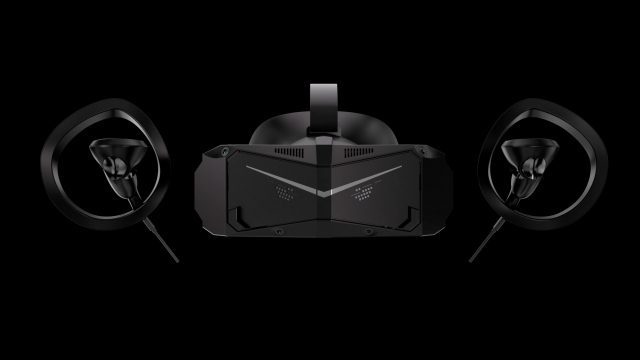
For those looking for the best visual fidelity from Pimax, the Crystal Super is the company’s latest offering. It also drops some of the extraneous features of the original Crystal, like the standalone processor, but keeps some others.
The headlining features are a 14.7MP (3,840 × 3,840) per-eye resolution, optionally using QLED & mini-LED (120Hz) or micro-OLED (90Hz).
Pimax says the Crystal Super not only has greater clarity than the original Crystal thanks to the resolution boost, but also claims a “significantly bigger field-of-view.”
The exact field-of-view will depend on which of two different lens choices the buyer makes, one which will provide 50 PPD and a slightly higher field-of-view of 130° horizontal, or the other with 57 PPD with a slightly lower field-of-view (the exact FoV is not currently specified).
Unlike Crystal Light, Crystal Super will retain eye-tracking with automatic IPD adjustment and dynamic foveated rendering capabilities. It also has on-board audio.
The base model of Crystal Super with QLED display is priced at $1,800 with inside-out tracking, while the micro-OLED model is priced at $2,000. Or, you can buy both for $2,400, thanks to the Crystal Super’s ability to swap between different display modules. Controllers are sold separately.
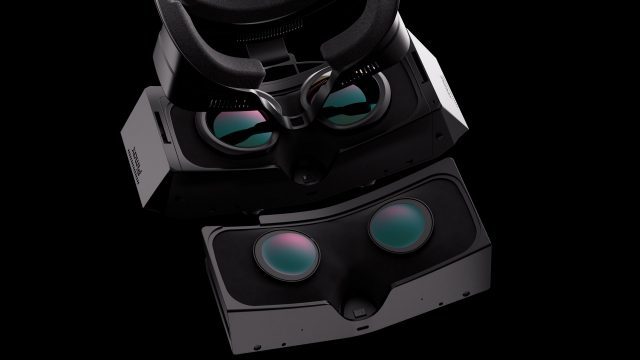
SteamVR Tracking can be added with an optional faceplate (additional pricing unknown).
Pimax says Crystal Super will ship in Q4 2024.
60GHz Wireless for the Original Crystal
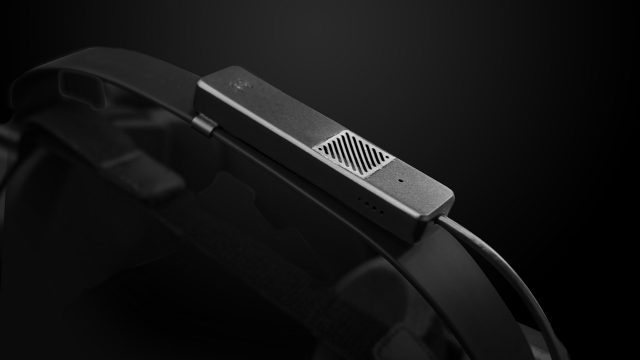
Pimax also showed further progress on its 60GHz “airlink” system for streaming PC VR content to the Crystal headset wirelessly. The wireless module was originally announced way back in 2021, but still hasn’t shipped.
Today the company showed the latest prototypes of the module—an impressively slim dongle—and announced a $300 price with shipping expected later this year.
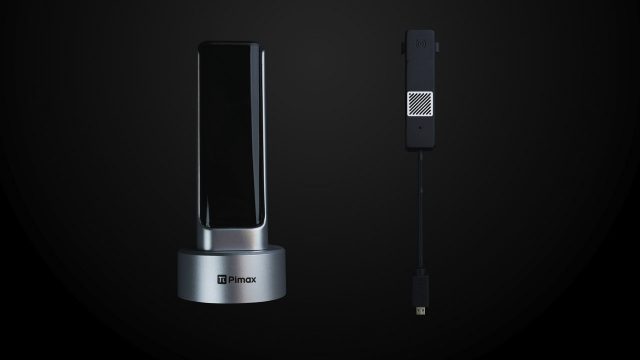 The airlink module is only compatible with the original Crystal headset because the Crystal Light and Crystal Super lack the on-board hardware necessary to handle the wireless connection and processing.
The airlink module is only compatible with the original Crystal headset because the Crystal Light and Crystal Super lack the on-board hardware necessary to handle the wireless connection and processing.
The post Pimax Reveals New High-end PC VR Headsets Focused on Affordability & Performance appeared first on Road to VR.
